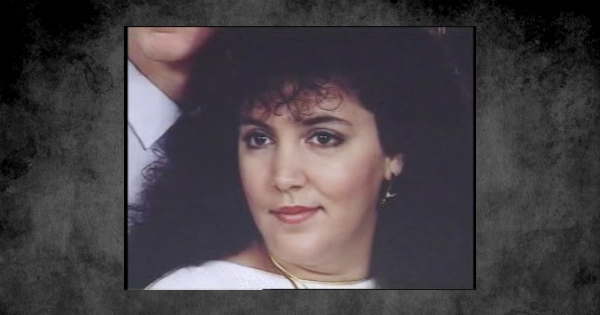Charlotte Pollis Disappears in Girard Ohio
In the pre-dawn hours of March 12, 1994, the tight-knit community of Girard, Ohio, awoke to a mystery that would endure for decades. At the heart of it lay the sudden disappearance of Charlotte Nagi Pollis, a 28-year-old mother of two. Her home—a modest brick ranch on a quiet residential block—became the scene of frantic searches, whispered rumors, and a police inquiry marked by frustration and unanswered questions. Though investigators pursued every lead, and family members pressed relentlessly for answers, Charlotte’s case remains one of the region’s most baffling cold cases. This article traces her life, the day she vanished, the evidence left behind, and the enduring search for truth.
A Mother’s Life Before Disappearance
Charlotte Nagi was born on July 4, 1965, to a close-knit family in Trumbull County. By 1994 she had married her high-school sweetheart, Paul, and together they parented two young children under the age of five. Friends described Charlotte as warm, engaging, and fiercely devoted to her family. She managed the household budget, volunteered at the local preschool, and maintained strong ties with her siblings. In the weeks before her disappearance she had complained of persistent ear pain, prompting a physician’s visit and a prescription for antibiotics. Despite the discomfort, she continued caring for her children, running errands, and entertaining neighborhood friends at their home.
The Night Before: Illness and Last Conversations
On the evening of March 11, Charlotte underwent treatment for an acute ear infection at a nearby urgent-care clinic. She returned home with a prescription and fresh worries about her health, but she displayed no signs of distress beyond fatigue. That night, at approximately 1:25 a.m., she spoke with her mother by telephone, discussing the medication schedule and assuring her that she planned to rest. According to family recollections, Charlotte sounded tired yet upbeat, looking forward to a quiet weekend. She remarked that she would take the children shopping for groceries the next morning, then settle in for a movie night. Unbeknownst to her family, those plans would never materialize.
The Morning of March 12, 1994: A Disappearance Revealed
At around 8:50 a.m. on March 12, Charlotte’s mother called the Pollis home to check on her. It was Paul who answered the ringing phone, explaining that Charlotte was still asleep and recuperating from her treatment. He said he would let her know her mother had called. According to Paul’s later statements, he then prepared breakfast, dressed the children, and loaded them into the family car to run a series of errands. He claimed they visited a pharmacy to refill Charlotte’s prescription, a laundromat, a scrap yard, a fast-food restaurant, and even viewed several houses for sale. By his account, the family returned home around 4 p.m., only then discovering that Charlotte was gone and that her purse, medications, and personal items remained on a cabinet inside.
Errands and Timeline Discrepancies
Almost immediately, discrepancies emerged in Paul’s recounting of events. Charlotte’s aunt had called the house at 10:00 a.m., 10:10, and 10:20 a.m., receiving no answer at the door or phone. A neighbor reported seeing Paul alone in a car packed with boxes and bags—no sign of the children—shortly before noon. Employees at the laundromat recalled no mother and children arriving, and the scrap yard Paul mentioned was closed for maintenance that day. These inconsistencies prompted detectives to question the validity of his timeline and focus early suspicion on Paul himself.
The Empty Home: Personal Items Left Behind
When police finally entered the Pollis residence, they found a tableau of abandonment. Charlotte’s purse sat open on a kitchen cabinet, her money and identification untouched. Her prescription bottle lay on its side; her shoes and winter coat rested on a hall bench. The children’s toys and car seats were still in place. There was no sign of a struggle: no overturned furniture, no blood spatters, no overturned wastebaskets or broken windows. Instead, every indication suggested that Charlotte had planned to return home at any moment. The completeness of her belongings strengthened the theory that she had not left voluntarily.
Footprints Leading to a Locked Shed
Perhaps the most enigmatic physical clue was discovered by Charlotte’s sister behind the house. In the fresh March snow, two distinct sets of footprints—one dress-shoe pattern and one work-boot tread—led from a side door to a locked garden shed. The shed door remained bolted shut, and when asked for the key, Paul claimed it was on Charlotte’s key ring inside her purse. The next morning, however, the shed appeared to have been cleaned out: muddy tools were gone, and the ground showed fresh scuff marks. No other footprints could be traced from the shed back into the yard, as if whatever—or whoever—had entered never exited in the open.
Discovery of Blood Evidence in the Family Car
Investigators then turned their attention to the family vehicle. In the trunk they detected a faint human bloodstain, too small for a conclusive analysis. By that time Paul had arranged for the car’s interior to be cleaned, citing concern over tracking mud from the oil refinery where he occasionally did freelance work. Items from the trunk—including an old blanket and a pair of gloves—were missing or intentionally discarded by Paul and his parents before authorities could secure them as evidence. The absence of forensic material left detectives with a single, tantalizing clue that could not be followed up.
Investigation and Law Enforcement Actions
Local law enforcement treated Charlotte’s disappearance as a potential homicide from the outset. Patrol cars canvassed the neighborhood, and detective teams interviewed dozens of neighbors, co-workers, and family friends. Despite the urgency, police protocols were hampered when the scene was “sanitized” by the family before a search warrant could be executed. Detectives faced criticism for not obtaining immediate access to the shed and vehicle. Meanwhile, Paul agreed to a voluntary polygraph test three days after Charlotte vanished—only to cancel at the last minute, citing stress. He remained cooperative in interviews but deflected questions about the shed and blood evidence.
The Husband as Primary Suspect
Within a week, investigative focus had narrowed to Paul. He became the subject of an obstruction charge when he refused to provide shed keys and failed to account for his whereabouts during critical morning hours. That charge was later dropped on Fifth Amendment grounds after Paul’s attorney argued his refusal was a constitutional right. Meanwhile, Paul published a brief public statement expressing love for his missing wife and relief when a tip led to the safe return of their eldest child, who had briefly slipped away from a babysitter on March 15. Yet Charlotte herself never resurfaced, and no other suspect emerged.
The Toll on Family and Community
For Charlotte’s children—two toddlers at the time—the disappearance was a terrifying mystery that reshaped their childhood. They were placed temporarily with relatives while investigations dragged on. Charlotte’s parents and siblings mounted a years-long campaign for case reviews, appearing on local radio shows, distributing flyers, and appealing for witnesses to come forward. The Pollis home, once a place of laughter and family dinners, became a symbol of loss and unanswered questions. Neighborhood children whispered about the “haunted house,” and annual anniversary vigils were held at the corner of Franklin and Prospect Streets.
Theories and Unanswered Questions
Over time, armchair detectives and true-crime enthusiasts proposed myriad theories. Some suggested a targeted abduction tied to Charlotte’s brief stint as a collections agent, but no evidence supported a connection. Others pointed to a botched robbery or a fugitive seeking refuge, yet no ransom demands or suspicious guests were ever reported. The presence of two distinct footprints and the bloodstain fueled speculation of accomplices—perhaps family members—helping to move Charlotte’s body. Still, none of these theories produced corroborating proof, and the locked shed remains an ominous focal point: what was hidden inside, and where did it go?
Continuing Hope and Cold Case Status
Today, Charlotte’s disappearance remains an open cold case with the Girard Police Department. Advances in DNA technology and renewed interest from online investigators have prompted law enforcement to revisit earlier evidence, including legacy photographs of the shed interior and surviving swabs from the car trunk. A small task force periodically reviews tips, and the case file is considered “active” for purposes of national missing-person databases. Charlotte’s children—now adults—continue to search social media and public records, hoping to glimpse a clue that leads them to their mother.
Conclusion: A Mystery That Endures
More than three decades after March 12, 1994, the disappearance of Charlotte Pollis stands as a haunting reminder of how a single day can alter countless lives. In Girard, Ohio, her empty purse and the silent shed remain powerful symbols of a family’s unresolved anguish. Despite advances in forensic science and the persistence of those who refuse to let her memory fade, Charlotte’s fate is still unknown. The case endures not only as a testament to investigative challenges but also as a call to action: until the questions are answered, Charlotte’s story compels us to remember that every missing person deserves a voice and that justice, though slow, must never be abandoned.
Discover more from City Towner
Subscribe to get the latest posts sent to your email.




